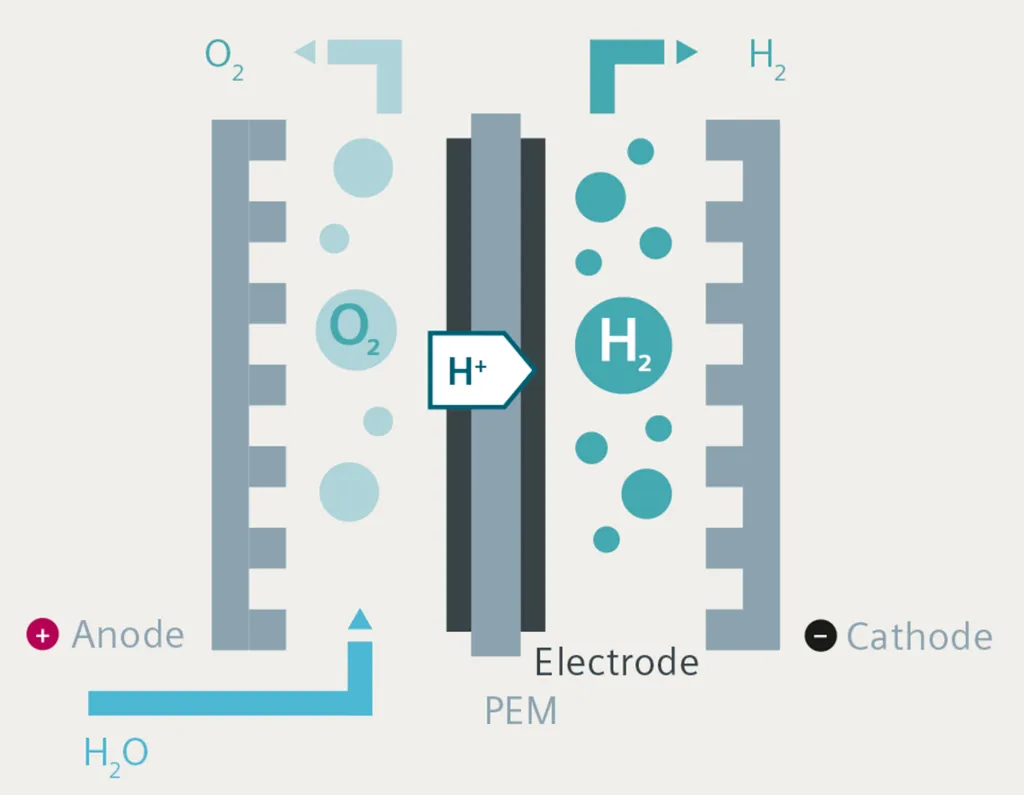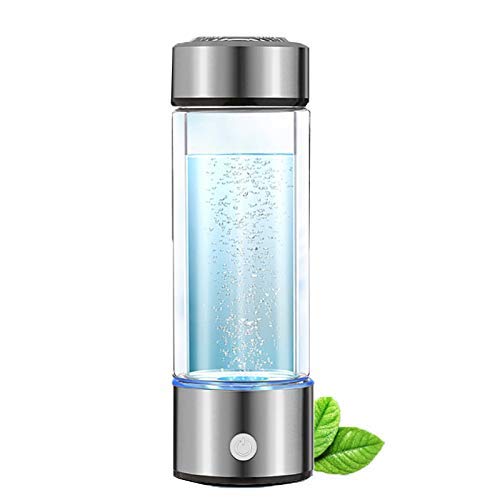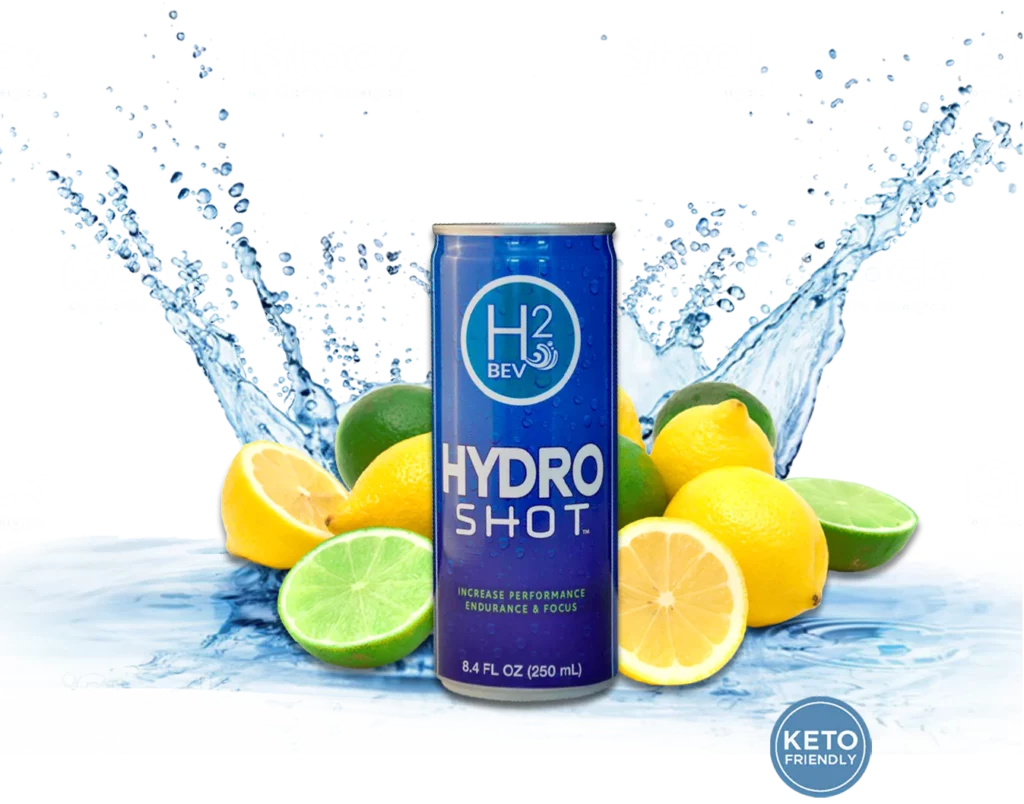Molecular hydrogen (“H2”) is gaining recognition as a powerful therapeutic gas with numerous potential health benefits. Many are calling molecular hydrogen the universe’s “fountain of youth.” Hopefully, this article will explain why some people think that.
Hydrogen (H2) is the universe's lightest, smallest, and most abundant element. It can penetrate biomembranes and diffuse into the cytosol, making it highly effective at distributing itself throughout the body. H2 also can rapidly reach the nucleus and mitochondria, protecting nuclear DNA and mitochondria from damage (Ohsawa et al., 2007). Unlike most antioxidant compounds, H2 can easily pass through the blood-brain barrier.
In an earlier article, Dr. Antonucci discusses some of the benefits of molecular hydrogen in the context of concussion, but these benefits also exist in all individuals. In this article, we will review the mechanisms of action of molecular hydrogen and discuss modes of administration.
Here is a brief review of Dr. Antonucci's previous article on molecular hydrogen:
One of the primary mechanisms of action for molecular hydrogen is its ability to scavenge reactive oxygen species (ROS), such as superoxide anions, hydroxyl radicals, and peroxynitrite. These ROS are produced as byproducts of normal cellular metabolism and cellular death. ROS are also upregulated in many disease processes, having the ability to damage cells, genes, proteins, and tissues. The damage they cause to various cellular components, such as DNA, proteins, and lipids, leads to many issues, from grey hair to cancer and diseases like Alzheimer’s. By scavenging these ROS, molecular hydrogen can reduce cellular oxidative stress and protect against oxidative damage and disease.
In addition to its antioxidant properties, molecular hydrogen has also been found to have anti-inflammatory effects. It can reduce the expression of pro-inflammatory cytokines and chemokines such as TNF-alpha, IL-6, and MCP-1. This can help to mitigate the effects of chronic inflammation, which is implicated in allergies, brain injury, chronic pain, migraine, digestive issues, asthma, and the pathogenesis of many other diseases, including cancer.
Molecular hydrogen has also been found to regulate the expression of various genes and protein activation states and to modulate cellular signaling pathways, including the Nrf2/Keap1 pathway. This pathy regulates the expression of innate antioxidant and detoxification enzymes. It also enhances the AMP-activated protein kinase (AMPK) pathway, which regulates cellular energy metabolism. By modulating these genes and pathways, molecular hydrogen can promote cellular health and resilience (anti-aging).

To access the therapeutic effects of molecular hydrogen, it must be consumed in some form and reach target tissues (the brain, skin, muscles, digestive system, organs, etc.) There are several methods for consuming molecular hydrogen, all of which offer various advantages and disadvantages. However, before we begin discussing how to administer molecular hydrogen, it's important to be aware that, to date, no upper-safety (maximum) limit for H2 consumption has been established by regulatory agencies such as the US Food and Drug Administration (FDA). The US Food and Drug Administration has recognized hydrogen gas as a food additive, generally recognized as safe (GRAS) status. Hundreds of human studies for deep-sea diving have shown inhalation of hydrogen gas, at much greater amounts than what is used for therapeutic use, is well-tolerated by the body with no chronic or toxic effects. H2 has no known adverse effects or toxicity, even at high concentrations, and great efficacy on nearly all pathogenic states involved in oxidative stress and inflammation.
Another human study found that administering common doses of H2 (up to 4% H2 in air) for 60 minutes did not cause any adverse effects. However, longer-term studies are needed to assess higher doses' safety fully.
It is important to note that most studies on H2 consumption have used doses well below these levels and have generally found efficacy and no adverse effects. However, it is recommended that all individuals consult with a healthcare provider before consuming high doses of H2, especially for extended periods.
The minimal dose of inhaled molecular hydrogen that needs to be consumed for health benefits is still unclear. However, the proposed therapeutic dose for consumption seems to be about 80 mL hydrogen gas (6.6 mg or 3.3 mmol) per day, and maximum effects seem to occur after administration for one month. This aids in the calculation of dosing.
Molecular hydrogen can be generated through several processes. The most commonly used in low-volume medicine and commercial applications is through a molecular hydrogen generator, which uses electrolysis to break water into molecular hydrogen (H2) and oxygen (O). This process involves running a direct electrical current (DC) through the water and separating the molecular hydrogen gas from the oxygen gas. During the electrolysis process, water molecules are oxidized at the anode, which produces oxygen gas, and reduced at the cathode, which produces hydrogen gas.

The overall reaction is, therefore, known as a redox reaction. It is important to note that this requires pure water, also known as distilled water. Unless a Polymer Electrolyte Membrane (PEM) is utilized, impure/tap water can ruin the equipment and contaminate the reaction. Think of the PEM as a strainer. H2O is like pasta-water. Gravity is the flow of electricity. When you pour the pasta water into the strainer, the noodles stay, and the water selectively permeates and collects on the other side. This allows uni-directional selective passage of H2 through he membrane, so pure molecular hydrogen is collected.
The chemical equation for the electrolysis of water is:
2H2O(l)→ electricity→ 2H2(g) + O2(g)
The released molecular hydrogen and oxygen is a safe, pure gas form that can be inhaled, aerosolized, or suspended in a solution.
Another method of producing molecular hydrogen is a chemical reaction between water and elemental magnesium. When pure magnesium is placed in pure water at room temperature, the product of the reaction is magnesium hydroxide (MgOH2) and molecular hydrogen (H2). The reaction occurs slowly at room temperature and can be sped up by increasing the surface area of the magnesium (grinding it up), providing heat, or chemical catalysts and water-soluble acids that affect the pH (such as tartaric acid and adipic acid). It's also important to note that this is a slow reaction, taking approximately 10 minutes to begin and 20 minutes to conclude, even with catalysts. This method is more commonly used for creating hydrogen-rich water, which we will discuss later.
The chemical equation for this reaction is:
Mg(s) + 2H2O(l) → Mg(OH)2(s) + H2(g)
For large-scale industrial applications, molecular hydrogen can be produced by combining high-temperature steam [H2O(g)] with methane gas (CH4) under pressure. Catalysts of nickel or platinum are also used. The byproducts of this reaction are not exactly environmentally friendly, as it produces 3 H2 molecules and 1 molecule of carbon monoxide (CO).
The chemical equation for this reaction is:
CH4(g) + H2O(g)→pressure→ CO(g)+ 3H2(g)
Hydrogen is generally administered by one of four delivery routes: inhalation, ingesting hydrogen-enriched water, surface contact of hydrogen solutions, or injecting a sterile hydrogen-saturated saline solution. Each type of hydrogen administration has different pros and cons, speeds of action, and different primary effects on tissues.
One popular method of molecular hydrogen consumption is inhalation. This method primarily targets and benefits the respiratory and cardiovascular systems. When hydrogen gas is inhaled, because it is such a small and highly diffusable molecule, it can quickly enter the bloodstream through the lungs and reach the cells of various organs and tissues in the body. Inhaled hydrogen gas has been shown to have antioxidant and anti-inflammatory effects, and it has been studied for its potential therapeutic applications in various medical conditions. This makes it great for the co-treatment of lung infections, acute COVID, "long-COVID", asthma, COPD, allergies, atherosclerosis, heart disease, and more. This involves breathing molecular hydrogen via a dedicated inhaler or molecular hydrogen generator device.

Inhalation of hydrogen is typically performed by pumping hydrogen through a nasal cannula at 200-600 mL per minute, at a concentration of <4%. It is important to remember that humans require approximately 5 L of air per minute to breathe, so it is not advised to use a full face mask (non-rebreather mask) as one might use for oxygen administration.
Several methods exist to create H2-infused water, including infusing H2 gas into water under high pressure, electrolyzing water in a sealed container to produce and saturate the water with H2, and reacting magnesium metal or its hydride with water. These techniques can also be applied to other solvents besides water. H2 can penetrate glass and plastic containers quickly, but aluminum (and palladium) vessels can keep hydrogen gas for an extended period.
Hydrogen water generators range from $75 to $6,000, depending on the amount of hydrogen-rich water you wish to create. A small, inexpensive hydrogen water generator might be sufficient for personal use or traveling. A larger device is necessary if you would like your entire family or your patients to experience the benefits of hydrogen.

In the research, hydrogen water consumption has shown promising outcomes in many conditions such as Parkinson's Disease, Alzheimer's disease, autism, stroke, hypoxia-ischemia, concussion, diabetes/metabolic syndrome, high cholesterol and triglycerides, radiation side-effects, heart attack, atherosclerosis (hardening of arteries), liver disease, organ rejection (in transplants), NSAID-induced gastric lesions, acute pancreatitis, bladder pain, testicular injury, preeclampsia, acute noise-induced hearing loss, some retinal injuries, osteoporosis, periodontal diseases, joint diseases, and many more. Hydrogen could also be recognized as a possible anti-aging agent that tackles several hallmarks of aging, including loss of function and telomere length shortening.
Depending on the source, purity, and concentration of hydrogen in the water, most studies suggest drinking 1-2 liters a day. Notably, H2 concentrations as low as 0.08 ppm exhibited nearly the same effects as saturated HW (1.5 ppm H2), with very robust statistical differences compared to water controls. After HW is consumed, most H2 in the blood is undetectable within 30 min, likely due to lung expiration. Thus, how a low amount of HW over a short exposure period can be effective remains unknown. Kamimura and colleagues found that H2-water can accumulate in the liver with glycogen, which may partly explain this phenomenon. In another example, as a 4% gas, the amount of H2 exposed to a 60-kg person for 1 hour would be eight or more times higher than that of drinking saturated HW. Nevertheless, HW is shown to be as effective as, sometimes more effective than, inhaled H2. Therefore, the amount of administered H2 seems independent of the magnitude of effects in many cases. Perhaps the mode of delivery is more important than we have realized.
One argument often made regarding hydrogen water studies is that merely increasing water consumption will confer significant health benefits and that even mild dehydration can contribute to various illnesses. However, that argument is invalid when considering the studies comparing hydrogen water to the same amount of plain water consumed.
Hydrogen water's primary concern is its price, which poses a significant challenge to adoption. Due to the packaging difficulties, a single can or bottle of hydrogen water costs between $2.50 and $4.00, compared to approximately $0.70 for bottled water. In many published studies, the participants consumed 51 ounces of hydrogen water daily, equivalent to almost seven 8-ounce bottles (up to $28). Hydrogen water tablets and machines are also accessible and may offer some cost savings.

Certain manufacturers with extensive knowledge of packaging and chemistry, such as HydroShot®, have produced a proprietary and researched super-saturated H2 drink with a full day's dosage of H2 in one drink. This would allow a one-per-day consumption. The retail cost of this product is approximately $40 for 12. This link will save you 10% compliments of a partnership with the Carrick Institute.
Another method of molecular hydrogen consumption is through topical applications; this involves saturating a topical solution such as liquid (baths/eye drops), cream, or gel with molecular hydrogen gas before applying it to the skin. This technique has been studied for potential therapeutic applications in psoriasis, cracks and ulcers, burns and scalds, corns and calluses, herpetic lesions (cold sores), acne, etc. wrinkles, sun damage, and more.
Hydrogen bathing is also an option, which involves soaking in water infused with molecular hydrogen gas. In studies, subjects bathed in hydrogen-rich 41ºC (106ºF) water for 10 minutes, once per day, for six months.

Hydrogen gas has been shown to affect the skin and enter the bloodstream, which can help neutralize harmful free radicals and reduce oxidative stress. When the body is exposed to hydrogen gas, it can potentially help to activate certain cellular pathways that promote cellular repair and regeneration. This can potentially lead to improved skin health and a reduction in the appearance of wrinkles and fine lines. Bathing in hydrogen-rich water has been shown to help reduce muscle soreness and fatigue after exercise, which can help improve recovery time and increase overall energy levels. Additionally, hydrogen bathing has been shown to normalize skin pigmentation, reduce visceral fat, and improve blood glucose metabolism.
Results reported that "wide-ranging, dense, and irregularly shaped skin blotches became markedly smaller and thinner, assumedly through reductive bleaching of melanin and lipofuscin and promotion of dermal cell renewal by the hydrogen-rich warm water. Ultrasonic resonance-based analysis on the abdominal cross-section revealed that the visceral fat area decreased from 47 to 36 cm2 (-23%), and the abdominal circumference decreased from 91 to 82 cm (-10%) in the two female subjects bathing in hydrogen water. Also, after 6-month hydrogen-water bathing, the low-density lipoprotein cholesterol level was decreased by 16.2%, and the fasting blood glucose level increased by 13.6% in the blood of a female subject.
One way to prepare this sterile isotonic solution for injection or infusion in place of normal saline is to immerse saline bags in a hydrogen bath. The permeability of the plastic bags containing the hydrogen allows the hydrogen to diffuse out of the hydrogen bath into the saline fluid over approximately 4 hours. The newly formed hydrogen solution must be infused within 1 hour for maximum benefits.

It is possible to use isotonic solutions dissolved with hydrogen for an intravenous and/or local injection. This allows for direct administration and fine control over the dosage if desired.
Only licensed and qualified medical professionals should perform intravenous or injections.

Even though we know so much about molecular hydrogen and its health benefits, clinicians are researchers are still trying to understand it. We have yet to elucidate the exact mechanisms by which hydrogen causes its health effects. For example, a healthy individual's gut bacteria produces approximately 10-12 L of hydrogen daily (on the order of 10-100x, the amount consumed in studies). So why does consuming small doses of exogenous hydrogen cause such profound effects?
H2 infusion is limited to 0.8 mM under normal pressure, and drinking H2-water only results in a blood H2 concentration of 10 μM with a short duration in the body. Additionally, inhaling 1-4% of H2 gas for 30 minutes or more is more effective, resulting in a blood concentration of 8-32 μM. However, theoretically, these levels should not be enough to fully exhibit the benefits of H2 that we observe due to the slow direct reaction rate of H2 with -OH in water. So why do such low levels of H2 effectively compete with numerous cellular targets in chronic or acute disease processes?
Despite these questions and uncertainties, studies still show that H2 can regulate gene expression and signal transductions, resulting in various phenotypes, such as reducing inflammation, stimulating energy metabolism, and neuroprotection. So, regardless of how it is consumed, even small doses may offer therapeutic effects on our health and well-being.
